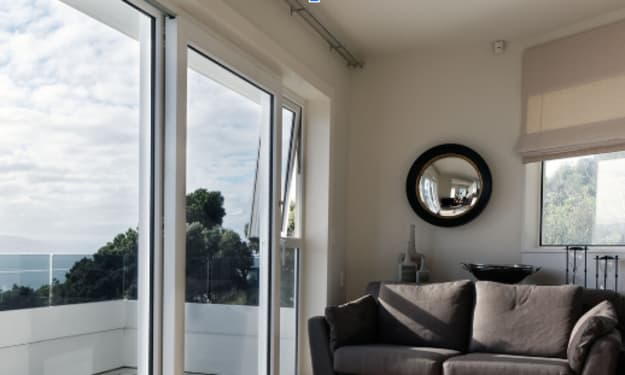
uPVC WINDOW - WATER TIGHTNESS
Due to the obvious nature of its name, this property of windows appears to be the easiest to explain. Some readers might already know that windows cannot be divided into water-tight and non-water-tight. There are as many as 10 water-tightness classes defined for uncovered windows, from 1A to 9A, as well as a special class, Exxxx where the xxxx stands for the value of pressure greater than 600 Pa.
Uncovered windows
The term “uncovered window” is defined as any window installed in a building wall whose entire surface is exposed to weather conditions, to include wind and rain.
Depending on the test pressure level and the time for which the tested window remains completely water-tight to rainwater, windows are given appropriate designations. Consequently, in reality, the “water-tightness”, also referred to as “driving-rain resistance”, of a uPVC window identifies the wind load during rainfall at which rainwater will start penetrating the interior of the window structure.
The specific relation between the pressure and the duration of exposure, and the water-tightness class is shown in the table below, which is prepared based on the EN 12 208:2001 classification standard entitled “Windows and doors. Water tightness. Classification.” According to the standard, windows which at the test pressure of 0 Pa leak water to the interior of the window structure after a period that is shorter than 15 minutes are not classified at all.
The windows that are the least water-tight are designated as 1A, which means that they do not leak rainwater for 15 minutes at the pressure of 0 Pa, which means that in regular use conditions in regions with regular rain they leak nearly all the time.
Windows classified as 9A start leaking water into the interior of the structure only at the pressure of 600 PA, which means that leaks may occur in the case of rainfall at wind speeds equal to approx. 112 km/h. Windows of very high level of water tightness are those marked with the “E” symbol, with the pressure value provided, e.g. E 1200, which means that they remain water-tight for at least 5 minutes when exposed to pressure of a specific value (in this case 1,200 Pa) that is greater than 600 Pa.
Water tightness is the second property of uPVC windows, beside resistance to wind load where, the wind pressure acting on the window is of key importance. When selecting windows based on their tested characteristics, one should make sure not to treat these two properties separately. This is particularly important with regards to the pressure value. In nature, wind and heavy rains often occur at the same time. One must keep in mind that even if a window is in the highest C class with regards to the bend in the frame on which the wind pressure acts, the bend is equal to 1/300 of the length of a given component. In the case of a window that is 1 metre tall, 1/300 is equal to 3.3 millimetres. In the case of a window that is 2 metres high, 1/300 is equal to 6.6 millimetres. Do you think that the window will remain water-tight if such a bend occurs?
This is why the wind load resistance class and the water-tightness class of windows must be considered at the same time. Perhaps this will not completely eliminate the possible negative consequences of the elements acting on the window, but it will certainly allow significantly mitigating them.
For any more information, please write us at [email protected].





Comments
SEO Aluplast is not accepting comments at the moment
Want to show your support? Send them a one-off tip.